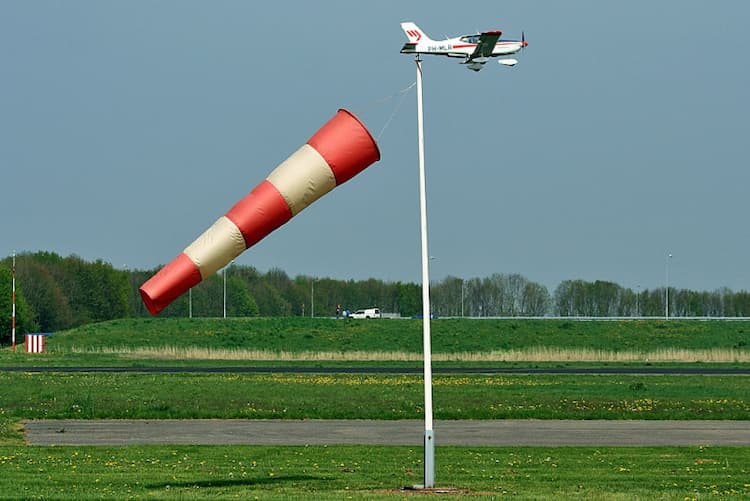The flight and aircraft industry is undoubtedly one of the most demanding and safety-focused industries in the world, necessitating meticulous attention to even the tiniest details from all sides. In addition to the staff’s responsibility for passengers’ safety, the ground staff and facilities are also subject to a number of operational and safety requirements.
As such, aside from the most popular inflight accessories, there has been an increased focus on the ground equipment used in airports and flight operations, one of which is the aviation windsock. This seemingly unimportant piece of fabric has a central role to play in flight safety and operations.
What Is a Windsock in Aviation?

source: windsockcompany.co.uk
In simple words, it’s a conical fabric tube that indicates the direction and speed of the wind around airports and airfields. It’s basically fabric sleeves or tube-like structures mounted on poles, typically near the runway and other airside areas including helipads.
This specific design helps visualise the direction and strength of the wind, which is crucial for flight operations. It’s an all-important tool for pilots, air traffic controllers and the ground crew to decide the best flight path or which direction they should land depending on the wind speed. When they know these metrics, they can adjust the flight plan accordingly and ensure a safe journey.
Major Factors to Consider
The majority of windsocks on the market are constructed from materials like polyester, canvas, or even rubberised fabric. These materials are known for their high tensile strength and minimal stretching, but even with their durability, some models might be more suitable for a certain environment than others.
Colour
By far the most common version is the red-and-white striped one, which is internationally recognised as the signature airfield wind indicator. However, the colour may vary depending on their location and application – while they may be red, blue, green, orange, or yellow.
The key things to consider are visibility, contrast, and of course the environment. The colours should be picked depending on the background, so they can be seen from a distance and hold up in particular weather or environmental conditions.
For instance, many airports have grassy terrains along the runway. In this case, green windsocks may not be the most suitable option because they may blend in with the environment and not be visible from a distance.
Length and Diameter

source: weathershop.co.za
The length and diameter of a windsock can definitely influence wind speed accuracy and visibility. It should be long enough to indicate the lowest wind speed at the airfield, while its diameter must be wide enough to provide accurate readings.
In addition, the distance to the windsock’s position will determine the size – if it’s too small and positioned in an area that’s far from the runway, wind speed accuracy might be affected. Similarly, if it’s set up too close to other objects, its readings may be inaccurate.
Calibration
You can use an anemometer to determine the accuracy of your readings. This is basically a device that measures wind speed, and when paired together with a windsock can help detect any potential inaccuracies. When checked and calibrated periodically, the anemometer will ensure that it’s giving the correct wind speed readings.
Mounting
Generally speaking, windsocks are mounted on specialised poles made from aluminium or galvanised steel. The mast itself is placed on a metal base that’s built into the ground, allowing it to stand tall and hold the wind sock securely in place.
The swivel frame – which is a metal basket-like structure – is mounted on the pole, and it’s designed to keep the windsock outstretched even in strong gusts. It can rotate a full 180 degrees, with a weight at the bottom that keeps it facing into the wind no matter which way it’s blowing.
Additionally, you may choose to add some accessories to the existing system, such as a light or additional weather instruments. The former can make the tool more visible in low-light environments, while the latter can be used to measure other conditions like temperature, humidity and more.
You can also opt for a tilting mast, which allows the pole to bend and rotate when you want to change position. This can be incredibly useful when you need to adjust the direction without having to move the entire mounting system.
Directional Deviation
Sometimes a windsock can show a slight deviation in the direction of the wind, which is caused by swirling winds or air currents around nearby obstacles. For instance, if there’s a mountain or a tree nearby, it might indicate that the wind is blowing in a slightly different direction.
In these cases, you might need to adjust the position and height. A higher pole may be able to capture more accurate readings, as it will be above the obstacles and be less affected by swirling winds. But if you need to go lower, you should opt for a tilting mast instead, which will allow you to keep the windsock pointed in the right direction regardless of the topography.

